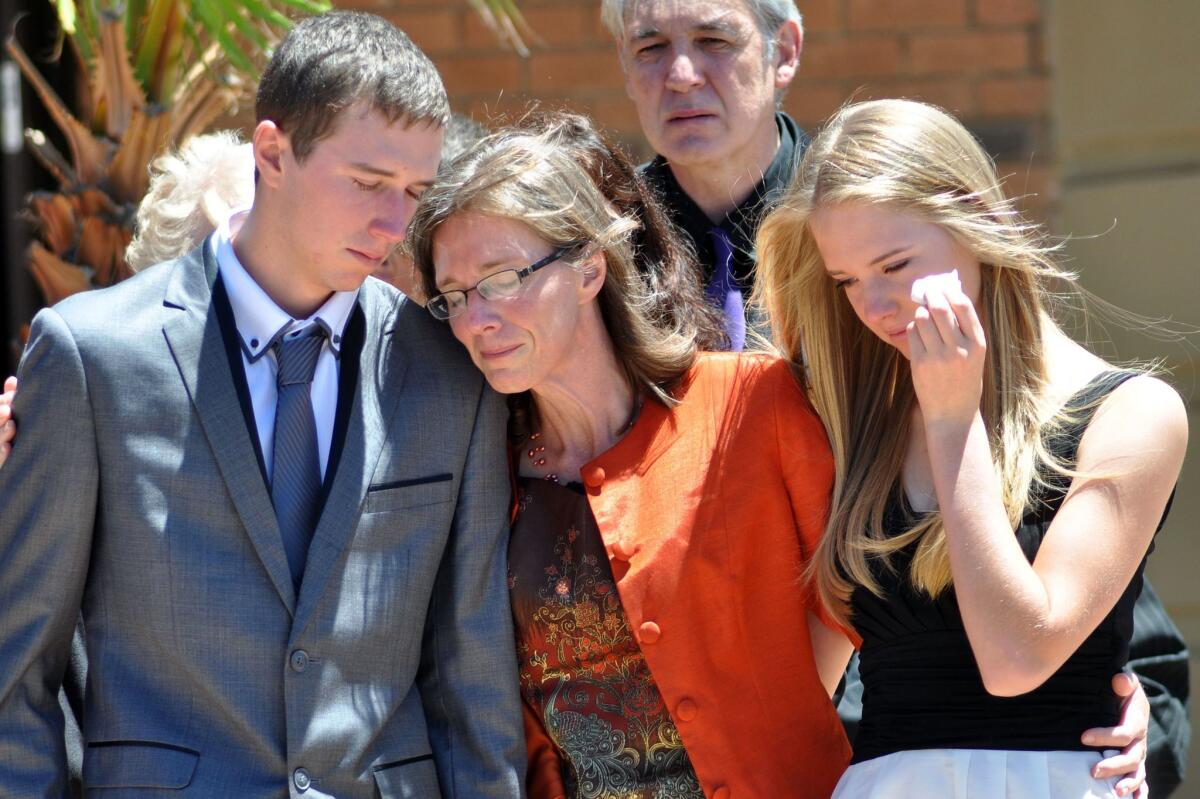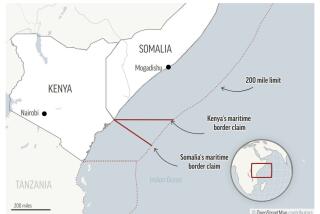Hostage killings have given new impetus to even risky rescue attempts

- Share via
Reporting from Washington — Under cover of darkness, three dozen U.S. commandos crept up on a walled compound in southern Yemen. Intelligence indicated that Luke Somers, an American hostage, was imprisoned inside.
Conditions were far from ideal. Getting to Somers on foot required breaching two walls. There was poor surveillance of the rugged site. But Somers’ captors had threatened to kill him within days. So Navy SEALs went in.
The attempted Dec. 6 rescue quickly went awry, when a barking dog apparently alerted guards and a 10-minute firefight erupted. U.S. officials said a militant raced ahead of the raiders and shot Somers and another hostage, South African schoolteacher Pierre Korkie. Both later died.
The disappointing outcome, one of three unsuccessful rescue missions this year, highlights a new willingness by the Obama administration to try to save Americans held by terrorist groups despite risks that once would have been considered too great, senior U.S. officials said.
The willingness to accept the risks was given greater impetus this fall by grisly videos of the beheadings of Americans and others held captive by Islamic State militants in Syria, officials said.
It also rests on the growing realization in the White House that, unlike in times past, rescuers can’t wait until they are certain where hostages are and until the Pentagon, FBI and intelligence agencies have high confidence about their ability to rescue them.
“We’ve needed to go out with imperfect intelligence and imperfect conditions to have any chance of saving American lives,” said a senior military official who spoke on condition of anonymity in discussing classified operations. “And that means there’s that much more risk of failing.”
Prompted in part by complaints from hostage families, the White House last month said it had begun a review of how the government handles such cases. But officials said the review is unlikely to lead to a recommendation to lift the U.S. prohibition on paying ransoms, as many other countries do to get their citizens home.
Nor, Pentagon officials said, is the review likely to lead to the constraint of rescue efforts. Islamic State militants are believed to hold at least one other American hostage, an aid worker abducted in Syria last year.
U.S. officials have disclosed few details about the woman in hopes that minimizing attention will aid her rescue.
The willingness of the White House to approve rescue missions on less definitive intelligence began last summer when U.S. special operations troops swarmed into a compound in northern Syria, where journalists James Foley and Steven Sotloff were believed to be imprisoned.
Recently freed Western hostages, who had been held with the Americans before being ransomed and released, had given the FBI details on the layout of the buildings and other information. U.S. intelligence pinpointed a likely compound near Raqqah, an Islamic State stronghold, according to a senior U.S. official who spoke anonymously in discussing sensitive details of the raid.
Army Delta Force commandos took a week to rehearse the operation and move from Ft. Bragg, N.C., to the Middle East for an assault on the compound. They landed in helicopters on the night of July 3 and engaged in a firefight with militants.
But Foley and Sotloff weren’t there.
“It took a lot longer because [the commandos] weren’t on location and because of the need to rehearse before going into a tough location,” said another Pentagon official, who, like others, agreed to speak in return for anonymity because of the sensitive nature of the raids.
The subsequent beheadings of Foley and Sotloff, shown in gruesome videos posted by their captors in August and September, quickly changed the calculus for President Obama and his advisors as they considered the dangers of rescue operations.
“They’re willing to accept a bit more risk than we expected,” the senior military officer said of the White House. “And the military is certainly willing to take these on because we know the impending fate of these hostages.”
Some hostage families say the military operations caught them by surprise, faulting the government for not sharing more information with them.
Marc and Debra Tice, parents of Austin Tice, don’t know who is holding their son, a freelance journalist and former Marine captain, who was abducted near Damascus, Syria, in August 2012. They’ve received no ransom demands or other communications from groups fighting in Syria’s civil war.
The Tices called for family involvement in decisions to send military forces to rescue hostages, and for a reconsideration of the official no-ransom policy. U.S. officials say paying ransoms would encourage more kidnapping of Americans.
“If ransom becomes an issue, there should be a discussion of options,” they wrote in a Dec. 14 op-ed piece that appeared in multiple newspapers. “There is no simple answer for every hostage scenario.”
Obama has authorized several daring rescues.
In 2009, Navy SEAL snipers saved an American ship captain held in a lifeboat by Somali pirates. In 2012, U.S. special operations troops rescued two aid workers, an American and a Dane, held in a remote camp in Somalia.
Another attempt proved tragic. In 2011, four Americans were shot and killed by Somali pirates who had seized their sailboat and were being trailed by U.S. Navy vessels.
Rescuers in those cases knew where the hostages were held, a luxury they don’t always have in Syria.
Intelligence gathering in Syria has improved in recent months. U.S. surveillance aircraft that now fly regularly over the east and north of the country are able to intercept communications and gather intelligence on sites believed to hold hostages.
But Islamic State fighters also are taking greater precautions, moving hostages more frequently to frustrate rescue attempts.
The failed operation in Yemen this month followed an earlier attempt to rescue Somers. On Nov. 25, U.S. commandos freed eight captives, including citizens of Saudi Arabia, Yemen and Ethiopia, who were being held in a cave. But Somers apparently had been moved days earlier.
The second try came after U.S. officials received a tip that Somers, a 33-year-old photojournalist who had disappeared from the Yemeni capital, Sana, in September 2013, had been taken to Shabwa province, where Al Qaeda in the Arabian Peninsula has many supporters, U.S. officials said.
His captors had imprisoned him and Korkie in the house of a local sheik, Mubarak al-Harad, who had agreed to hide them, Tariq al-Daghari, a local tribal leader, said in an interview. “He volunteered to hide the hostages in his house,” in a walled compound with two other buildings, said Daghari.
Even with the tip, it was a close call on whether to send the SEALs. The team was still in the region and able to move quickly. But it had no confirmation that Somers was there.
The team also had little time to rehearse the operation, which required breaching walls and overpowering five militants and at least a dozen others in the compound.
But the SEALs lost the advantage of surprise when they were spotted about 110 yards from the outer wall. In the firefight that followed, U.S. troops called in attack helicopters for help.
By the time they made it inside, Somers and Korkie had been shot.
Times staff writer Cloud reported from Washington and special correspondent Ali from Sana.
More to Read
Sign up for Essential California
The most important California stories and recommendations in your inbox every morning.
You may occasionally receive promotional content from the Los Angeles Times.











